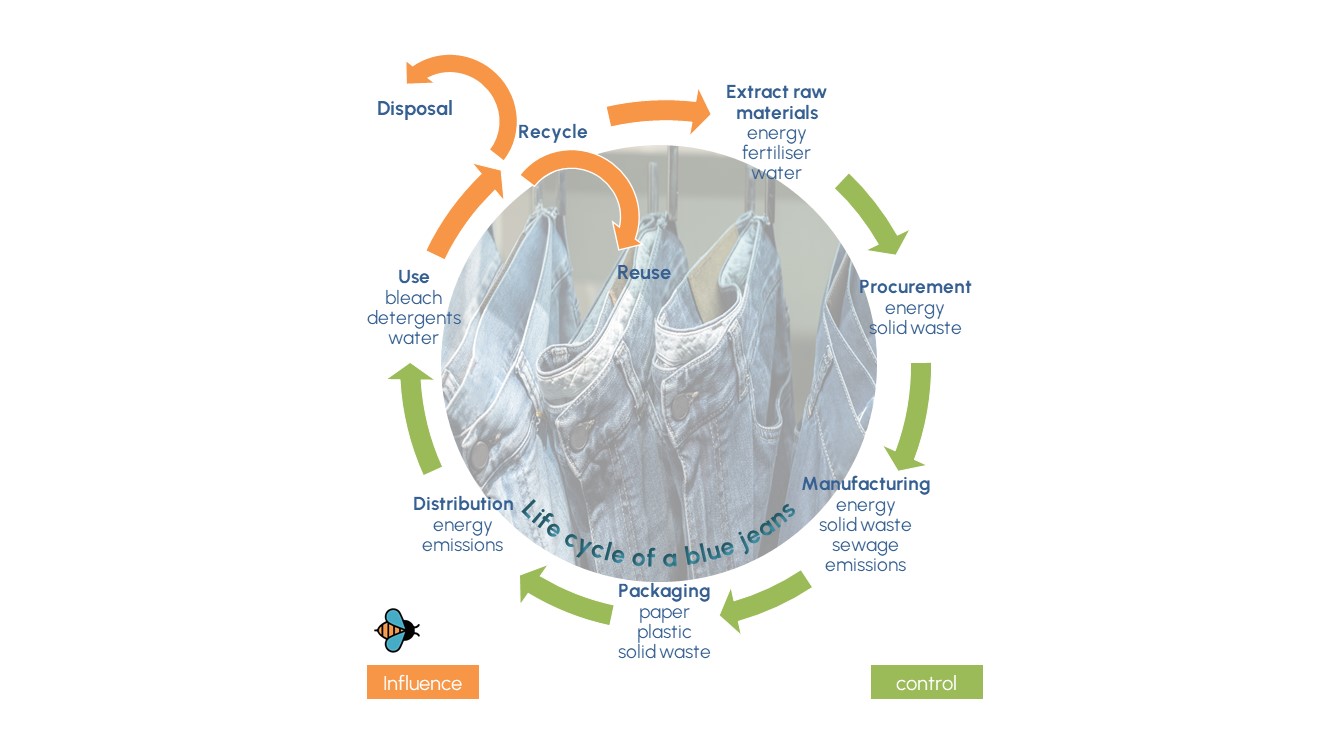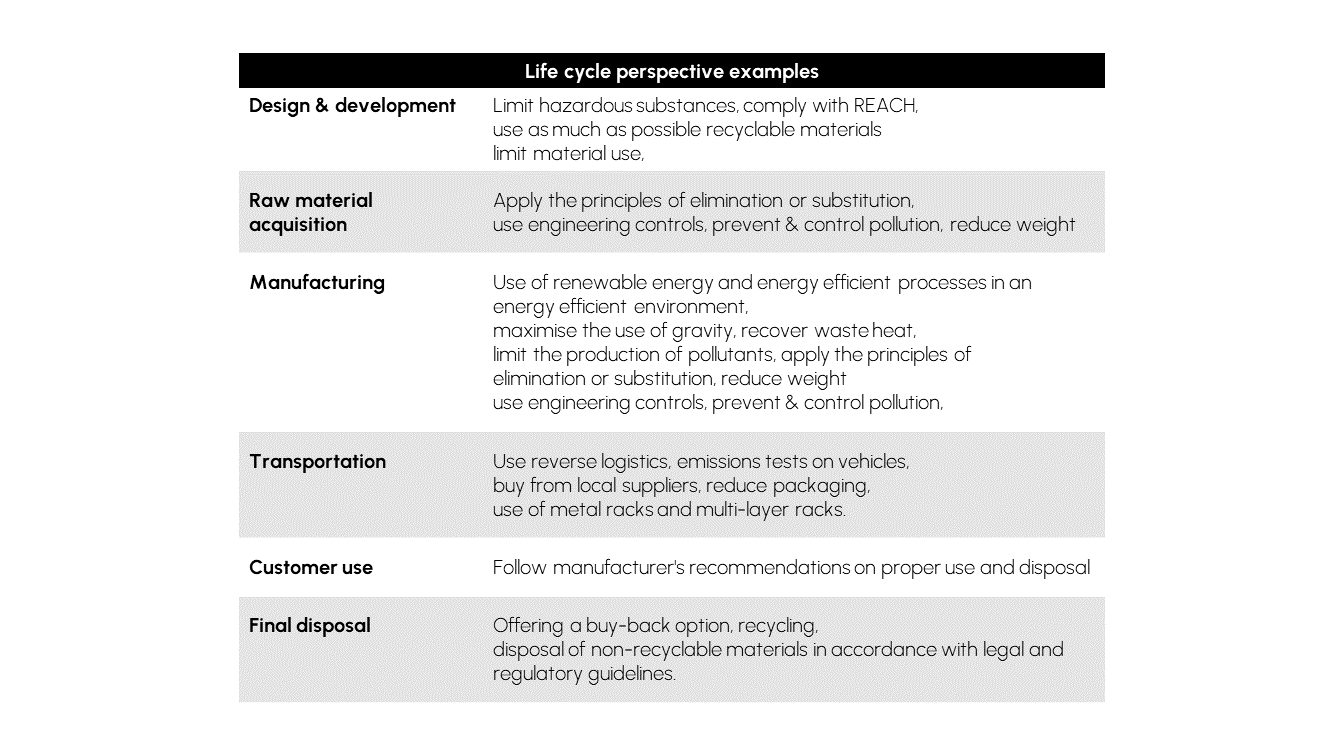What is a life cycle?
The definition of life cycle is “consecutive and interlinked stages of a system, from raw material acquisition or generation from natural resources to final disposal.”
So for the blue denim, the life cycle of a product starts with extracting raw materials from natural resources and generating energy. Next the materials and energy go into design, production, packaging, distribution, use, maintenance and, finally, re-use, recycling, and final disposal.
In Life cycle thinking (LCT) equal attention is paid to the ecological consequences of a product not only during the production process at the production site, but throughout the entire life cycle. Indeed, the raw materials, transportation, use phase or disposal may be the main drivers of environmental impacts of a product.
Why is a life cycle perspective important?
The life cycle perspective helps us to see how our choices are part of a whole system of events. Specifically, a life cycle perspective is important for two reasons. Firstly, only a holistic approach can identify the stages with the greatest impact. Therefore, only this approach can maximise reductions by setting the right priorities. Secondly, this approach makes it possible to understand how the choices made affect each stage of the life cycle. Consequently, this helps avoiding unintentionally shifting impacts from one stage of the life cycle to another.
What is life cycle perspective in ISO 14001:2015?
ISO 14001:2015 does not require a life cycle assessment. Rather, thinking carefully about the life cycle stages that can be controlled or influenced by the organisation is sufficient.
When applying a life cycle perspective to its products and services, an organisation shall
- consider the life cycle stages of the product or service and understand the degree of control over the different stages
- consider the life of the product and understand the degree of influence of the product on the life cycle
- consider the technological complexity of the product
- consider the supply chain and evaluate the organisation’s influence on the supply chain
As such the organisation will have an indication of the areas where to exercise direct control or influence. By consequence this will influence the practical boundaries of controls and policies. Indeed, the organisation may keep those stages of the life cycle over which it has the most control or influence. After all, these offer the greatest opportunity to reduce resource use and minimise pollution or waste.
This is particularly useful about clause 4.3 of ISO 14001:2015. Given that it contains the requirement to define the scope of the management system about environmental aspects and impacts described by the organisation.
The term is also used later in the standard (sections 6.1.2 and 8.1), where it is mandatory to consider a life cycle perspective. For example, in the planning and application of operational controls. Specifically, purchasing policies may encourage more environmentally friendly choices upstream. Or better information about the range of products and services can help downstream end-users make more informed decisions about disposal.
Benefits of life cycle perspective
It makes sense to take the life cycle approach into account at every stage – it is good for the environment. After all, it enables an organisation to meet one or more sustainable development or environmental objectives more easily or better. Ultimately, this will improve the bottom-line and make your organisation attractive to environmentally conscious talents. Indeed, consumers are increasingly concerned about the environmental practices of the companies they work for or who manufacture the products they use. If employees have a choice between a company that pays conscious attention to the environment and one that does not, they are likely to prefer the former. In addition, their active involvement in improvement projects creates commitment, a sense of ownership and higher retention.



